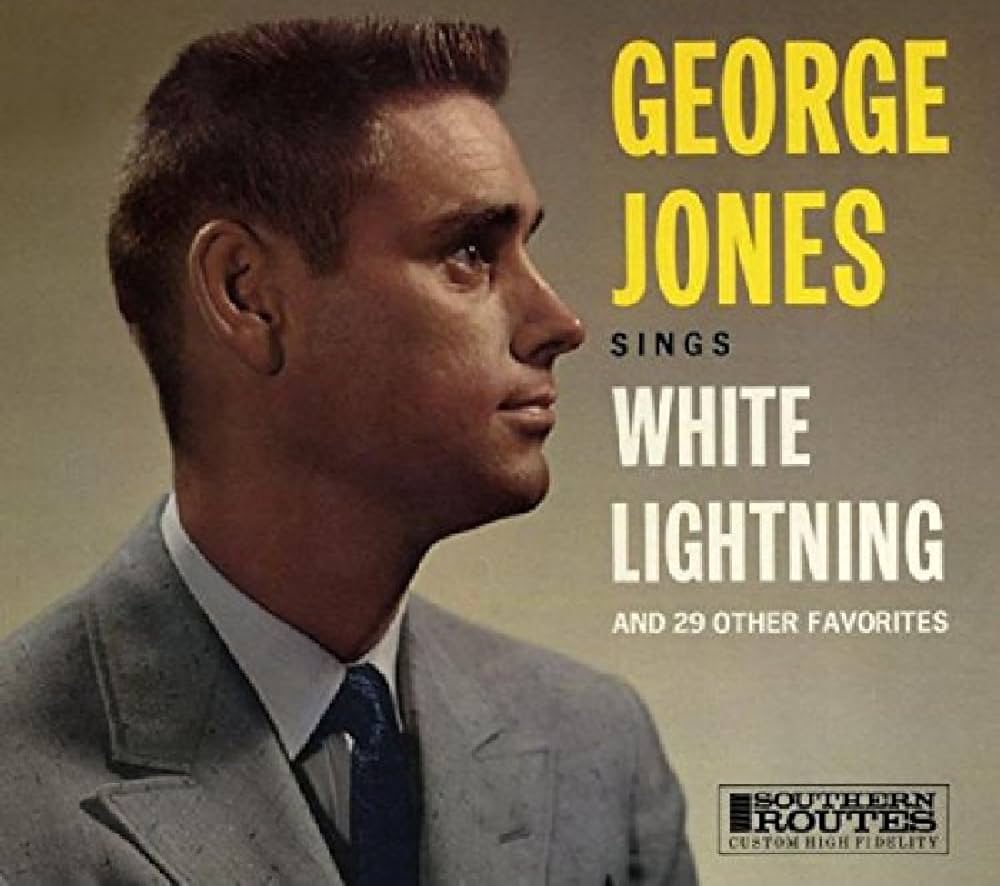A Spirited Anthem of Rebellion and the Unyielding Thirst for Freedom

When George Jones unleashed White Lightning upon the world in 1959, it roared onto the scene with an energy as potent as the infamous moonshine it celebrated. The song was part of the album White Lightning and Other Favorites, and it swiftly climbed to the pinnacle of the Billboard country charts, securing Jones his first number-one hit. An ode to clandestine distillation and defiance against authority, White Lightning transcended its rollicking façade to capture a universal yearning for unbridled liberty and a life lived on one’s own terms.
Penned by J.P. Richardson, also known as “The Big Bopper,” White Lightning is more than just a narrative of bootlegging; it’s an exuberant tale that mirrors the rebellious spirit permeating American culture during that era. Richardson’s lyrics tell of a father-son duo concocting their potent brew in the seclusion of the backwoods, with lawmen perpetually on their trail. It’s a classic yarn steeped in the Southern tradition of outsmarting authority, and George Jones delivers it with his signature vocal prowess, blending humor with hints of danger. His performance embodies a raw, emotive quality that resonates with listeners, drawing them into the heart of this backcountry escapade.
The origins of this song can be traced to Richardson’s fascination with American folklore surrounding moonshine. In post-Prohibition America, moonshine represented both rebellion against government oversight and an entrepreneurial spirit—values deeply embedded within certain cultural narratives. In crafting White Lightning, Richardson tapped into these themes, giving voice to a uniquely American experience while endowing it with a playful twist.
Jones’s rendition immortalizes these themes through his dynamic delivery and unmistakable honky-tonk style. With its driving beat and twangy guitar riffs, the song encapsulates both the exhilaration and peril inherent in bootlegging. The fast-paced rhythm mirrors the relentless pursuit by authorities and the heartbeat-quickening excitement of evading capture. It’s a musical embodiment of risk-taking, where every note seems to shimmer with potential disaster or triumph.
Lyrically, White Lightning paints vivid images with its words—grandpappy’s still hidden in the hills, bubbling vats of illegal liquor, and the frenetic chase by lawmen determined to enforce prohibitionist edicts. Yet beneath this narrative lies a deeper commentary on resilience and ingenuity. The protagonist’s family defies not only legal constraints but also economic hardship, crafting their own success through grit and innovation. In this light, moonshine becomes a symbol for individualism—a testament to those who carve their destiny from rough terrain.
Culturally, White Lightning stands as an emblematic piece within the genre of country music—a genre that often serves as a chronicle of real-life struggles and triumphs faced by everyday people. Its influence reverberates through decades, inspiring countless artists who follow in its rebellious footsteps. It holds a mirror to societal tensions and celebrations alike, encapsulating moments when personal freedom is seized amidst adversity.
In conclusion, George Jones’s White Lightning is not merely a lively anthem about illicit alcohol; it’s a profound exploration of human resilience against societal constraints. Through its infectious melody and compelling storytelling, it captures both the spirit of rebellion and the enduring quest for self-determination—a narrative as intoxicating as moonshine itself.